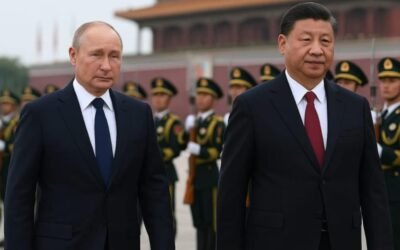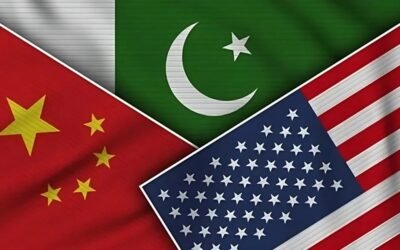Pakistan’s geography gives it a unique strategic position. It acts as an overland bridge linking China and Afghanistan. Along its northern frontier lies Chitral District. This district borders Afghanistan’s remote Wakhan Corridor. The highlands of Chitral provide a strategic trade route. They connect Pakistan with Afghanistan and the Central Asian states via the Wakhan Corridor. Historically, merchants from Peshawar and Chitral crossed the Boroghil into Wakhan. They reached Kashgar and Yarkand in what is now China’s Xinjiang. This history shows Chitral’s potential as a conduit to Chinese markets.
You May Like To Read: The Trilateral China-Afghanistan-Pakistan Counterterrorism Dialogue: Policy or PR?
Chitral: A Strategic Alternate CPEC Route
Pakistani planners have proposed an alternate CPEC route through Chitral. In 2016, Chitral’s Chamber of Commerce urged Islamabad to build a CPEC spur via the district. The plan envisions a highway from Gwadar Port on the Arabian Sea, through Balochistan and Khyber Pakhtunkhwa, to Chitral. From there, it would cross into Afghanistan at the Broghol Pass and pass through the Wakhan Corridor. Pakistan’s roads already reach Boroghil. Only the Afghan section, about 50-60 km to the Wakhjir Pass, needs construction. Once completed, the route would link Pakistan’s highways directly to China’s via the Wakhan Corridor. It would create a continuous land connection from Gwadar to Kashgar.
Pakistan is improving its northern connections. The 8.75 km Lowari Tunnel, completed in 2017, now gives year-round access to Chitral. A Dir-Chitral motorway is under construction, cutting travel from Islamabad from eleven hours to six. Planned roads along the Yarkhun River will reach Boroghil. On the Afghan side, China has built a road from the Wakhjir Pass to Tashkurgan in Xinjiang. Only Pakistan’s missing link remains. Experts say that once a road reaches Boroghil, Pakistan’s highway will connect directly to China’s network. This will create a continuous route.

Source: The Friday Times
Economic Potential of the Chitral Corridor
Economically, this corridor could be transformative. Chitral and neighboring Afghan provinces are rich in resources. Pakistan’s Geological Survey has identified millions of tons of copper, iron, chromite, and other minerals there. A secure highway would make mining and exporting these resources viable via Gwadar or Kashgar. It would also allow Afghan agricultural and manufactured goods to reach Pakistani and Chinese markets. Observers note that the Wakhan route “offers Pakistan a direct pathway to Central Asia,” opening new markets in Tajikistan and beyond. Analysts stress that without Afghan peace and open transit, CPEC cannot fully deliver Pakistan’s potential. For Islamabad, the corridor would diversify trade routes and bring jobs and investment to remote border areas.

Source: Arab News
Key Benefits of the Chitral-Wakhan Corridor
The Chitral-Wakhan corridor offers several strategic and economic advantages. It provides direct access to Central Asia, linking Pakistan to Tajikistan and other states via a shorter northern route. The corridor would facilitate the export of Afghan and Pakistani minerals and agricultural products through Gwadar and China, boosting trade. It also diversifies transit options, offering an alternative to the Karakoram Highway, which enhances resilience and reduces dependence on a single route. Moreover, the corridor can spur regional development by creating infrastructure, jobs, and economic growth in Chitral, Khyber Pakhtunkhwa, and eastern Afghanistan. Finally, it promotes regional integration by connecting Afghanistan more closely to the CPEC and BRI networks, strengthening overall connectivity.
Political Support for the Chitral-Wakhan Corridor
Politically, Islamabad has secured high-level backing for this vision. In August 2025, Pakistan’s Foreign Minister met his Chinese and Afghan counterparts in Kabul. They agreed to deepen “collaboration in trade and transit” and explicitly pledged to extend CPEC into Afghanistan. Pakistani officials highlight that linking Gwadar to Kabul benefits all parties. Afghanistan would gain reliable access to the sea and Chinese markets. Pakistan and China would gain a stable overland corridor. Pakistan’s former ambassador to China called extending CPEC to Kabul “a natural extension” of connectivity plans. The agreement signals a strong regional commitment and shared economic interests.
Expanding Regional Connectivity Beyond Trilateral Talks
Beyond trilateral talks, Pakistan is engaging Central Asian partners. In late 2024, Islamabad announced a Pakistan-Tajikistan transit committee to enhance trade and connectivity. Officials described the 14 km Wakhan border as an “excellent opportunity” to link Tajikistan with Gwadar. Pakistani leaders stated their goal to become a “pivotal trade and transit hub” for landlocked Central Asia. Afghanistan is already using Pakistan’s routes. In June 2025, a second Afghan cargo ship carrying fertilizer docked at Gwadar, showing growing Afghan transit through Pakistani ports. Pakistan’s maritime minister called Gwadar a “strategic trade gateway” for Afghanistan. These steps reflect Islamabad’s push to turn regional connectivity projects into reality.

Source: Arab News
Building the Modern Silk Road Bridge
Pakistan is turning its strategic vision into reality by building a modern Silk Road bridge to China and Afghanistan. By extending CPEC and upgrading northern infrastructure, it provides a concrete physical link. Pakistani media and officials highlight that Afghan trade is already moving through Gwadar, reinforcing Islamabad’s narrative. Pakistan’s investments and diplomacy strengthen its role as both a physical and strategic bridge in the region. This approach brings economic benefits to Pakistan while promoting broader regional integration.
Conclusion
The Chitral-Wakhan corridor holds strategic and economic value for Pakistan. It can link Gwadar to Central Asia through Afghanistan. This route would diversify trade, unlock resources, and create jobs in remote areas. The corridor boosts regional integration by connecting Afghanistan and Central Asia to CPEC and the Belt and Road Initiative. With political backing, infrastructure growth, and rising trade, Pakistan is becoming a key land and trade bridge. If realized, this vision could transform regional connectivity and make Pakistan a central hub in South and Central Asia.
You May Like To Read: Rethinking Strategic Depth: From Kabul to Gwadar







